Blanding’s Turtle (Emydoidea blandingii)
Alternate names: Emys blandingii
by Jeff LeClere

Status
THREATENED and Species of Greatest Conservation Need. It is illegal to kill or collect this species by law in Iowa. Blanding’s turtles have lost a great amount of the marshland habitat they need. This species should be reported to us or the DNR whenever it is seen in Iowa.
Description
This is one of Iowa’s larger turtle species. Average adult size is from 5 to 8 inches carapace length. The carapace is high domed and looks like a helmet. The shell is black or dark gray with yellow dots or markings. The plastron is yellow with a large black blotch on the edge of each scute. Sometimes, there is a rust colored deposit covering the plastron from the water (see painted turtle account).
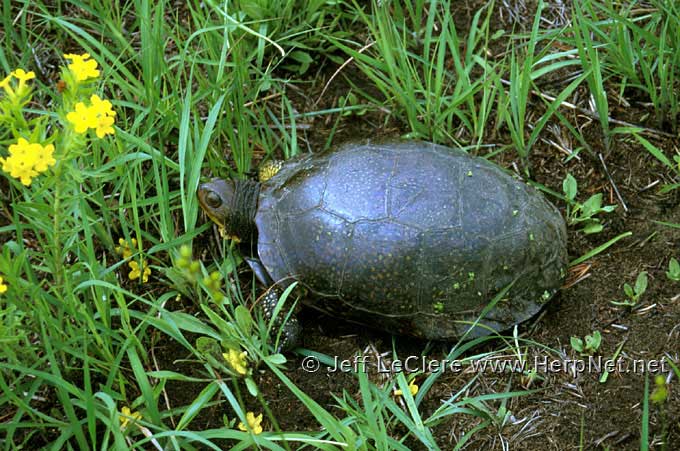
There is a prominent plastral hinge that allows the turtle to completely close the front of its shell. Skin coloration is black or dark gray. Sometimes, the limbs and head are peppered with yellow. The most distinguishing character of this species is the bright yellow coloration on the chin and throat. This can be seen using binoculars when the turtle has its neck extended. The upper jaw is notched.
Unlike most of Iowa’s aquatic turtle species, male Blanding’s turtles grow larger than the females. Males also have their cloacal opening positioned past the margin of the carapace edge and their plastrons are concave. Furthermore, while while females have some striping on the upper jaw, the upper jaw of males is plain black giving the appearance of a moustache.
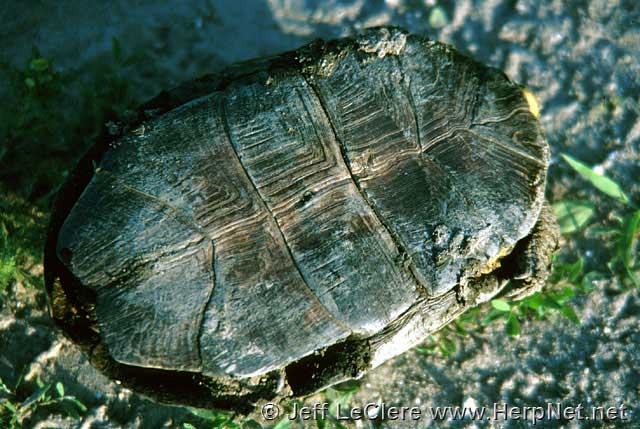
Hatchlings are not as vividly marked as adults. Their carapace is brown or gray, and is not high domed as in the adults. The hinge is absent on the plastron. The limbs are usually unmarked, but the head does have some yellow markings and the throat is pale yellow. They have unusually long tails. Juvenile Blanding’s turtles lose the hatchling appearance rather quickly and look more like the adults, but are even more brightly patterned.
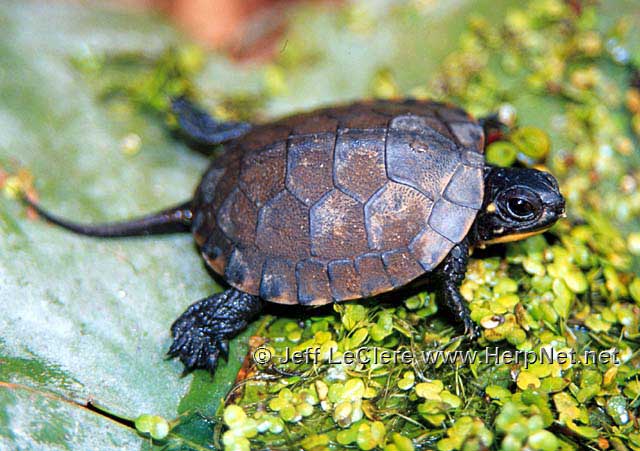
Subspecies
None.
Range
Blanding’s turtles are found throughout Iowa except for the western edge. The populations are scattered due to habitat loss and fragmentation.
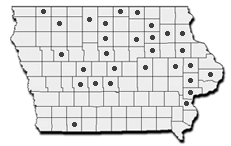
Habitat
Blanding’s turtles prefer shallow marshes, ponds, or similar wetlands. Often, they are found in bodies of water with a lot of emergent vegetation, duckweed, mosses, little or no current, and sandy soils. A complex of marshes or bogs (especially close to rivers) and streams are used.
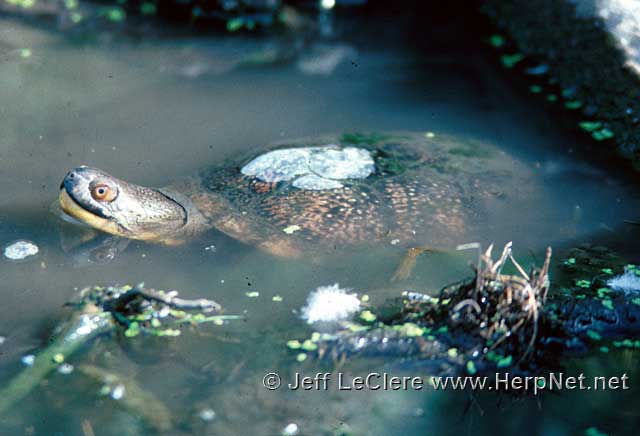
Habits
This unique Iowa turtle was named after William Blanding. Blanding’s turtles begin their active season in April when they emerge to bask, and begin feeding in May. They usually choose basking sites away from the shore. Large logs, snags, and muskrat lodges are favored basking sites. They are nervous turtles and when basking with other turtle species, they are the first to dive off their perch and take refuge. Also, they seem to take longer to resurface than other species (such as painted turtles).
Blanding’s turtles breed April through May. Courtship takes place in the water and consists of the male chasing the female. When she stops, he rests on top of her shell and bites at her head, neck, and limbs and swings his head back and forth in front of her shell (Ernst, Lovich, and Barbour, 1994). Copulation takes place when the female becomes passive (Vogt, 1981).
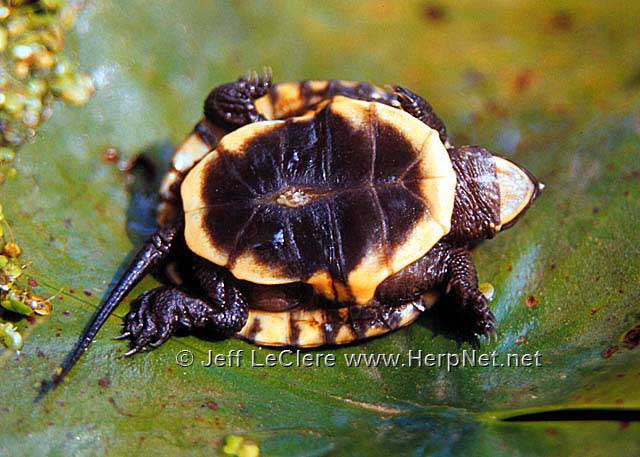
After the breeding season, some Blanding’s turtles become rather terrestrial and move from marsh to marsh (when the habitat is extensive enough to allow). Both sexes make journeys. Many have patterns and may follow similar paths every season. Females begin to search for nesting sites in early June. A great number of turtles may be seen searching for nesting sites during this time. They prefer rather open sandy areas in which to dig their nests. If suitable nesting areas are not located, they may nest on the shoulders of roads or driveways, in yards, or wander a considerable distance from their marsh until a suitable area is found. Many turtles are killed on the roadways at this time.
The female begins to dig the nest in evening or after dark (Ernst, Lovich, and Barbour, 1994). She deposits about 10 eggs and covers the nest. Smoothing the top of the nest may take over an hour (Linck et al., 1989). Then she heads back to the marsh. Females may stay on land from two to seven days (Congdon et al., 1983b). Less than half the females in a Michigan population reproduce every year (Congdon et al., 1983b). The young hatch in about 60 days. They travel the same route the mother did back to the marsh (not easy for a baby turtle!). Blanding’s turtles overwinter in the mud at the bottom of deep marshes in October. Hatchlings overwinter at the edges and low areas around wetlands.
Blanding’s turtles are not aggressive turtles. They rarely bite; instead, they pull their head and limbs inside their shell, close the front hinge tight, and wait for danger to pass. This method is very effective against predators, but, unfortunately, not against vehicles.
Raccoons and skunks eat a great number of turtle eggs (75% or greater of all eggs laid!) and then the baby turtles when they emerge. But we (humans) are the adult Blanding’s turtles’ biggest threat with our vehicles and habitat destruction. Blanding’s turtles naturally combat the egg and neonate predation problem by being long-lived and having very few (if any) natural enemies as adults. They are not meant to lose a large number of adult turtles. Even adults cannot, of course, combat a car or the draining of their marsh. Blanding’s turtles are declining in Iowa and are being considered for federal protection.
Food
Blanding’s turtles feed on a variety of animals, the favorite seems to be crayfish. They also eat earthworms, slugs, snails, fish, aquatic insect larvae, frogs, and tadpoles. They also eat plant material and berries. They consume both aquatic and terrestrial plants. Blanding’s turtles are one of the few Iowa turtles that are able to easily swallow food out of the water.